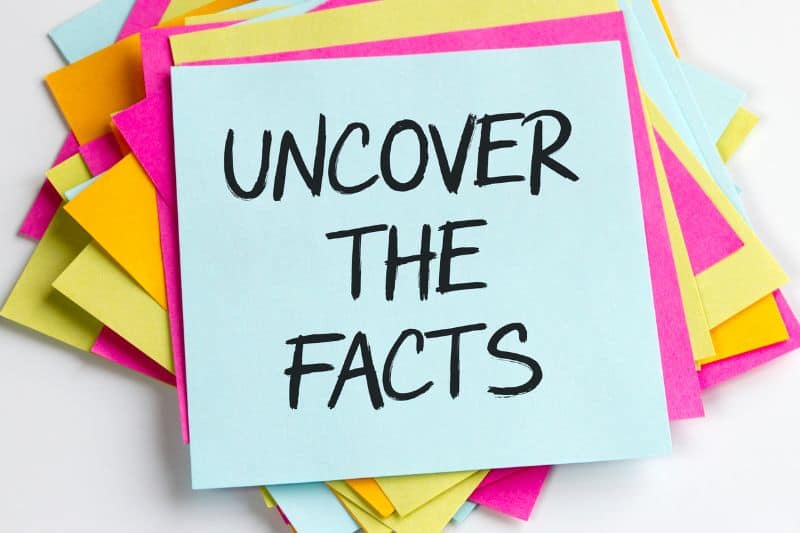Daily, we look out of the window to understand the state of the weather and probably tell how the day will look like. With an understanding of how the day will look, we can dress for such weather. The weather affects us in more ways than one and it can also influence how we feel and look at the world.
The weather, simply, is the temporary state or condition of the atmosphere. It is influenced by, among others, air pressure, temperature, and moisture. Here are some 35+ incredibly amazing facts about the weather.
Some scientists believe climate change is the cause of unprecedented melting of the North Pole, and that effects these very uncertain weather patterns. I think we should listen to those scientists and experts.
~ Dalai Lama
35+ Amazing Facts About the Weather
Let’s explore some of the interesting facts you might have never known about weather:
Fact 1: The Weather Influences Migration Patterns
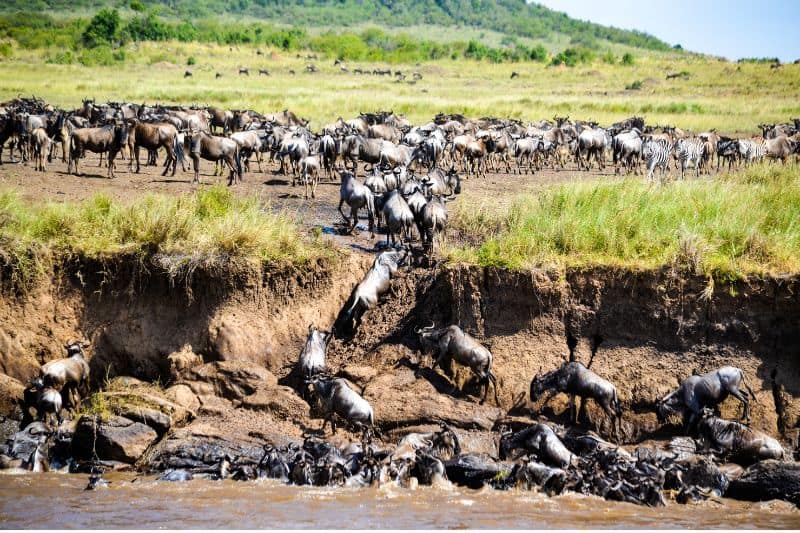
Have you ever known that the weather and climate are responsible for migration patterns in both humans and animals?
That’s true.
For instance, the great wildebeest migration occurs between July and September, where wildebeests, gazelles, zebras, and other animals migrate in thousands from the Serengeti in Tanzania to the Maasai Mara in Kenya, seeking fresh grazing.
Millions of people are also migrating due to crop failure, water scarcity, and the rise in sea levels.
Fact 2: Damages Caused by Weather Results in Billions of Dollars Across the Globe
The weather can get wild in an instant, causing a lot of damage. On average, 100,000 people are killed in weather-related accidents every year. The cause of death can range from tornadoes to hurricanes to floods.
Besides death, these weather extremes can cause great loss to the globe. Let’s take hurricanes, for instance. Alone, they cost the United States about $28 billion each year.
Fact 3: Lightning Has About 6 Million Strikes Every Day
We’ve all seen that super bright light flash in the sky. But have you ever known that there are about 8.6 million strikes of lightning every day?
That’s true, and the perfect place to see lightning strikes is Lake Maracaibo in Venezuela, where there is an 80% chance of experiencing a nocturnal thunderstorm.
Fact 4: Thunder Is Caused by Lightning
Once lightning strikes, it takes several seconds before we hear the thunder. However, thunder does not come after lightning, but instead, is caused by lightning. The speed of sound in air is slower than the speed of light, meaning we will see the lightning first, before hearing the thunder.
Fact 5: The Wettest Place on Earth Is Mawsynram, Meghalaya, India
The UK is known for many things, including the fact that it is almost ever rainy. However, Mawsynram, Meghalaya, India is the wettest place on the planet. The village receives more than 11 meters of rainfall every year.
Fact 6: The Driest Place on Earth Antofagasta, Chile
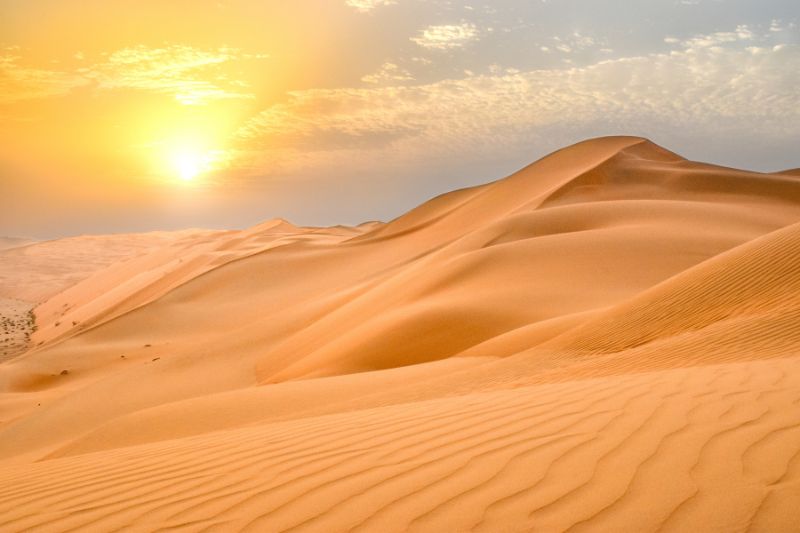
In contrast, the driest place on earth is Antofagasta, Chile. The city receives less than 0.1mm of rainfall every year and it can go for several years without receiving any rainfall altogether
Fact 7: Lightning Is Hotter Than The Sun Surface
At the time lightning strikes, it is hotter than the surface of the sun. Lightning is an electrostatic discharge, supercharged from ionized air, and as it finds its way to Earth, it releases massive bolts of electricity.
The temperature of lightning can reach 30,000°C, about five times hotter than the surface of the sun, also called the photosphere, which is about 5500°C. However, it’s worth noting that the core of the sun is much hotter than the two; at 15 million degrees Celsius.
Fact 8: Worms Prepare for A Flood
Worms wriggle up to the surface of the earth before a flood. It is because they cannot get oxygen when the soil is flooded and as such, they come up to the surface to breathe.
Fact 9: Lightning Strikes the Same Place
Again on lightning, it’s like it has a highway it follows, as it often strikes the same place, especially if that location is a tall, pointed, and isolated object. The Empire State Building, for instance, gets struck by lightning about 23 times each year.
Fact 10: The Hottest Temperature Ever Recorded Was 134.1 Degrees Fahrenheit
You might think that this happened recently with the increased global warming. However, it was recorded more than a century ago, precisely 1913. It happened in Greenland Ranch in Death Valley, California on July 10.
And just in case you’re wondering an equivalent of 134.1 degrees Fahrenheit in degrees Celsius, it’s 56.7. That’s more than half the boiling point of water and slightly lower than that of milk!
Fact 11: The Lowest Temperature Recorded Was on July 21, 1983, in Vostok, Antarctica
On the flip side, the lowest temperature ever recorded was on July 21, 1983, in Vostok, Antarctica, with the temperature hitting a genital-shrinking -89.2°C (-128.5°F). Just so you get a picture of how cold this is, water freezes at 0°C!
Fact 12: During Flashes of Lightning, It Is Advisable to Stay Indoors as It Is Very Risky and Can Cause Death
Being outdoors when there are bolts of lightning, is a very risky thing to do. In fact, being underneath a tree is the second-highest cause of lightning deaths. Just stay indoors and avoid metal and wire conductors.
Fact 13: The Highest Recorded Rainfall Was in 1956 and 2007
It happened in Unionville, Maryland in 1956, and on Reunion Island in 2007. On April 7, 1956, in Unionville, Maryland, 23 inches of rain fell in just 60 seconds. Yes, 1 minute!
To date, that is the highest recorded rainfall in one minute. The most rainfall in a week ever recorded was on Reunion Island in 2007 and was 5 meters, enough to cover a lorry.
Fact 14: Lightning Can Result in Forest Fires
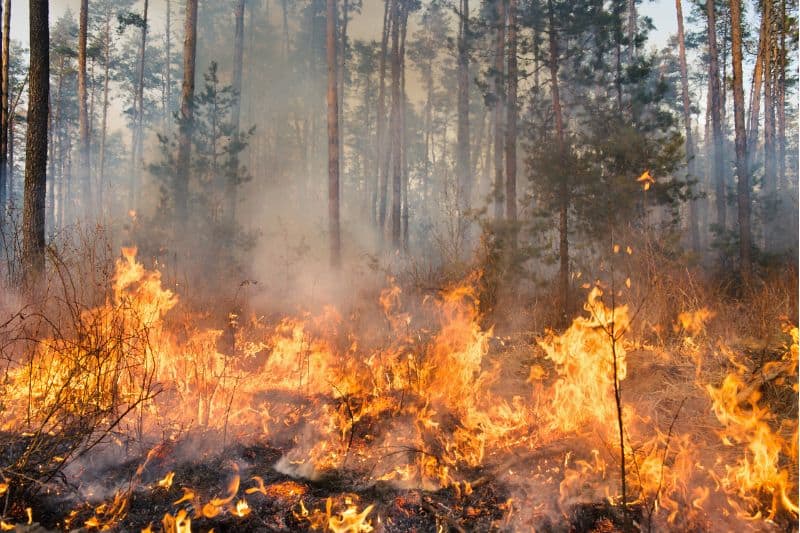
Cigarette butts and campfires may be among the most prevalent causes of forest fires. However, lightning is also enlisted as one of the causes of these fires. Lightning releases a bolt of electricity, which makes it possible to start a wildfire.
Also, smoke and carbon microparticles present in the upper regions of the atmosphere can initiate static.
Such static can spark discharge, turning into lightning, which has resulted in massive wildfires on the coast of Brazil, Peru, and Hawaii, burning acres of sugar cane. Statistically, 10,000 forest fires in the US every year are also caused by lightning
Fact 15: The Windiest Place on Earth Is Chicago
Chicago is called the Windy City because it’s very windy. But the windiest spot on Earth is Cape Denison in East Antarctica, where winds can go up to 153 km/h. That’s even faster than the highest driving speed in Texas, which is 85 mph (136.7 km/h).
Fact 16: “Raining Blood” Has Been Recorded
Between July and September 2001, in Kerala, a southern Indian state, it rained blood. Well, it was not actual blood, but red rain. It was first thought to be because of a burst meteor, but a study concluded that the red rains were colored by airborne spores
Fact 17: Hurricane Irma Is the Longest-Lasting Hurricane or Typhoon Ever Recorded
In September 2017, Hurricane Irma hit several Caribbean Island nations such as Cuba, the Bahamas, and also the US state of Florida.
To date, the Hurricane is the longest-lasting hurricane or typhoon ever recorded. It had winds of up to 185mph and lasted for 37 hours and is the longest maintained intensity for any cyclone.
Fact 18: Rivers Have Frozen Due to Extremely Cold Weather
Have you ever figured out that sometimes it gets so cold that rivers freeze?
You read that right.
For instance, the Mississippi River froze over its entire length in 1899. Also, the River Thames in the UK froze solid for two months in 1684.
Fact 19: There Are 13 Types of Storms
A storm isn’t just a storm! There are 13 recognized different types of storms. They are tornadoes, squalls, gales, windstorms, and dust devils, which are recognized by their wind patterns.
There also are hailstorms, blizzards, snowstorms, thunderstorms, ice storms, and tropical cyclones. Typical cyclones can also be known as tropical depressions, hurricanes, tropical storms, typhoons, or just cyclones, depending on your location
Fact 20: Earth Can Be Colder than Mars
Elon Musk revealed his dream of dying on Mars. But did you know that the Earth can be colder than the fourth planet of the solar system?
Well, logic dictates that the farther a planet is from the sun, the colder it gets, as it will receive less sunlight.
This means that Mars should be colder than Earth. However, surface temperatures can go as high as 20°C on Mars’ equator, with the temperatures on Earth reaching -153°C at the poles.
Fact 21: The First Weather Measuring and The Oldest Device Is the Rain Gauge
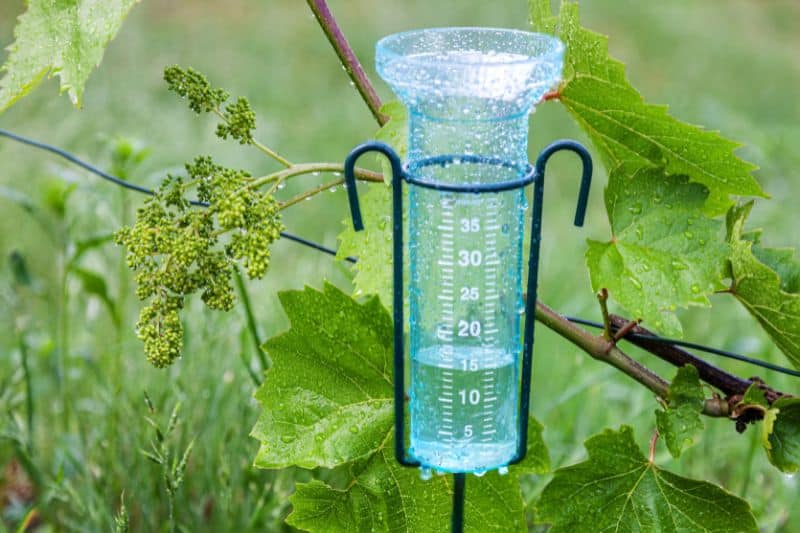
With recent technological advancements, we’ve had lots of new sophisticated tools come in to help in weather measuring.
However, going back to the archives, the rain gauge stands as the oldest and first weather-measuring device to be discovered. It was first used around 500 BC by Ancient Greeks and 400 BC by Indians.
Fact 22: Hurricanes Can Push More than 6m of Water Ashore
Hurricanes are known to be destructive. But have you ever known that they possess enough power to push more than 6m of water ashore?
That’s true.
And coming back to their destructive properties, in 1992, Hurricane Andrew was responsible for about 900 Burmese pythons escaping capture in Florida.
Studies showed that the hurricane and subsequent escape of the pythons into the Florida Everglades led to a 99% decrease in the population of raccoons and opossums, with some species of rabbits and foxes disappearing completely.
Fact 23: Heavy Snowfall Can Completely Diminish Visibility
Heavy snowfall or a whiteout, makes it incredibly difficult to see, and can also make you feel sick. In Antarctica, snow falls so hard sometimes that you might not be able to see your hand in front of your face.
Fact 24: The Sunniest Place on Earth Is Arizona (Yuma)
Yuma, Arizona, receives over 4,000 hours of sunshine each year. This makes the city the sunniest location on earth. That translates to an average of 11 hours of sunshine every day for a whole year!
Fact 25: The Least Sunny Place on Earth Is the South Pole
In contrast, the South Pole receives sunshine on about 182 days of the year. This means for half a year, the South Pole does not receive any sunshine, making it the least sunny place on Earth.
Fact 26: Longest Lasting Tropical Storm Is About 31 Days
Hurricane John was a tropical storm that changed its status from a hurricane to a typhoon and back to a hurricane.
This happened because it was the longest-lasting Pacific tropical storm in 1994, lasting 31 days and changing the dateline twice. The longest-lasting Atlantic tropical storm was known as Ginger, lasting 28 days in 1971.
Fact 27: Evaporation of Water Is Up To 4000 Gallons Daily for An Acre
Perhaps you’re laboring too much to water your crops. But did you know that nature puts in even more effort to steal it back into the atmosphere?
Well, studies show that one acre filled with corn produces 4,000 gallons of water through evaporation each day.
Fact 28: Hurricane Happens Every Year Except In 1907
In 1907, there were four tropical storms in the Atlantic and none was strong enough to be classified as a hurricane. It makes 1907 the only year the Atlantic failed to receive a single hurricane, over the last century.
Fact 29: Lightning Is Sexist

Lightning seems to prefer to strike men over women with about 85% of its victims being men, with the reason remaining a mystery. Surprisingly, despite choosing mostly men, it prefers to kill more women! But then, it’s not as deadly, because more than 90% of lightning strike victims survive!
Fact 30: The Weather Outside Earth Is Different
One of the most famous landmarks in the solar system is Jupiter’s Great Red Spot. It is famous because of an anticyclonic storm that has been in existence for at least 300 years
Fact 31: The Various Seasons of The Year Are Linked to The Earth’s Tilting Axis at An Angle of 23.5°
You might have known that the Earth rotates on its axis, revolving around the sun in its orbit. But did you know that it inclines 23.5 degrees from the plane of its orbit around the Sun? This means the sunlight is incident at different angles at different times of the year.
In June, the Northern Hemisphere is tilted more towards the sun, making it summer in the north and winter in the Southern Hemisphere.
The reverse is also true in December, making it summer in the south and winter in the north because then, the Southern Hemisphere is tilted more toward the sun
Fact 32: Human Activity Affects the Weather
We live in a world where climate change is taking its toll on the weather and human and animal lives. It comes from the fact that pollution from factories, machinery, and vehicles is contributing to the greenhouse effect, which is causing global warming.
Due to this, polar ice caps are melting, disrupting the lives of polar bears and other polar animals, sea levels are rising and the ozone layer is gradually being damaged, exposing us to harmful ultraviolet rays from the sun.
Fact 33: It Takes 8 Minutes for Sunlight to Reach Earth

With the speed of light estimated to be 300,000 km/s, it’s easy to think of anything faster. But believe it or not, even with this speed, it takes a whopping 8-1/3 minutes, or 500 seconds, for it to travel from the sun’s surface to Earth! That tells you how far the sun is from the Earth; 93 million miles (150 million kilometers)!
Fact 34: Tropical Countries Are Very Warm
They are countries that lie along the equator, like Brazil, Kenya, and Indonesia. With the equator running through them, it means they are closest to the sun, despite the earth’s tilt of 23.5°.
They, therefore, have a tropical climate, and with extreme temperatures, it can become dangerous, mainly for humans, especially if they are exposed for prolonged periods.
Fact 35: Tundra Are the Coldest Climates
Conversely, countries closest to the poles have some of the coldest weather in the world. Because of this, they hardly have trees. They include Greenland, Russia, and Canada. They experience long winters and short, yet cold summers.
Fact 36: Traditionally, People Predicted the Weather by Looking at Plant and Animal behavior
Long ago, before the “weatherman” was introduced, people used to look to plants and animals, such as bird migration, for hints or predictions of weather.
Frogs croaking faster, sheep’s wool uncurling, ants forming a line, cows lying down, and pine cones opening up were used to predict the coming of rains. These predictors still exist, although people rarely use them due to the advancement of technology.
References:
“30 Freaky Facts about the Weather!. (n.d.). National Geographic Kids. Retrieved from https://www.natgeokids.com/za/discover/geography/physical-geography/30-freaky-facts-about-weather/
Despotakis, C. (2019). Weather trivia: 65 amazing facts about our daily frenemy!. Useless Daily. Retrieved from https://www.uselessdaily.com/science/weather-trivia-65-amazing-facts-about-our-daily-frenemy/
Morrison, M. (2018). Burmese python invasion in Florida a hidden legacy of Hurricane Andrew. CBS News. Retrieved from https://www.cbsnews.com/news/burmese-python-invasive-species-in-florida-hurricane-andrew-legacy-cbsn-originals/
